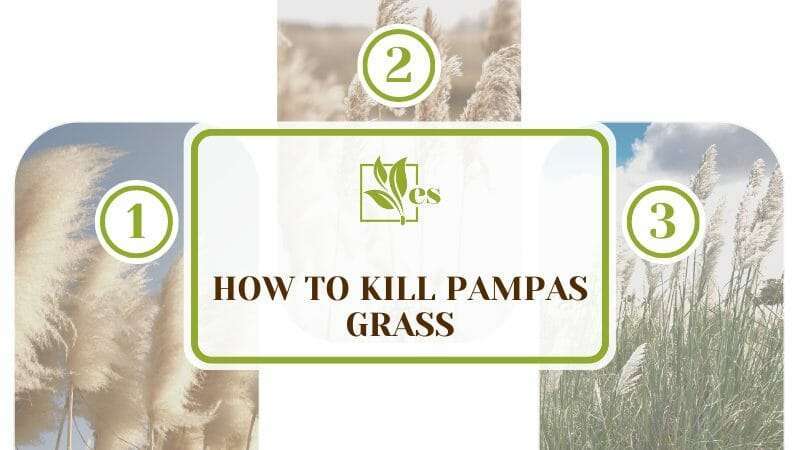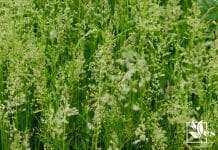If you want to kill pampas grass, our gardening experts are here to help you out! Pampas grass can be dug up, burned, manually pulled out, or treated with herbicides. There are many ways, but the ones we have proposed to you work better than others.

So, we’ll guide you through the best ways to remove your pampas grass, so read on to find them out.
JUMP TO TOPIC
How To Kill Pampas Grass
The pampas grass removal process can be quick or take several months. It all depends on the size of the pampas grass plant you want to remove. If you have small pampas grass plants, you can just pull them out by hand. If they are larger, you may need to trim the plant down to the root and apply herbicide.
Moreover, it takes the death of the root system to truly kill a pampas grass plant. Pampas grass plants have very hardy root systems, so it is often difficult. Burning, manual removal methods and herbicide application are three of the best ways to control pampas grass, and they are the ways that we are going to explore in the following section.

Note: Always make sure to wear gloves! Pampas grass has extremely sharp leaf edges that can cause cuts.
– Get Rid of it With Herbicide
The best herbicide to use for pampas grass is glyphosate, which can be applied in a variety of ways. First, trim or tie back the sharp leaves of the plant so you can access the base of the plant. Trimming the plant down to the root makes it easier to apply herbicide directly to the root ball.
Next, apply the herbicide and wait. Pampas grass is tenacious, so it may take up to two weeks for the entire system to completely die. If you have a large bank of pampas grass plants, a backpack sprayer may make application easier. Remember, it is important to follow all directions on herbicide labels, as these chemicals can be lethal if used improperly.
If you only have a few plants or are reluctant to utilize chemical herbicides like glyphosate in your yard, don’t worry. You still have effective options to remove pampas grass for good. Many people use diesel to kill it and a little less invasive process is to use baking soda.
– Burning Pampas Grass To Remove It
To burn pampas grass to remove it, first clear the area around it so that nothing else will catch on fire. Also, double-check the regulations and fire permits in your geographic area to make sure that burning is permitted. Then, you can start a fire by lighting a match and tossing it among the stalks.
If the plant is green and less likely to burn, drizzling a little lighter fluid around the base of the stalks will help it catch fire. Don’t forget to keep a hose or water source nearby just in case of sparks that get out of control.
– A Quick Primer on How To Dig up
The way to dig up pampas grass is simple: get out there with a pick and shovel and remove it! There are some tips that make the process easier, however:
- You can pull out the smaller plants which are under two inches tall manually.
- Soften the soil by moistening it with water around the root ball.
- Wear gloves and long sleeves to protect against sharp leaves.
- Tug on the stalks and ensure that the whole root system comes out when you pull.
Always remember to put your removed plants into a lawn waste bag or receptacle so that seeds don’t spread everywhere!
Final note:
Wet down the area immediately around the stand of pampas grass you want to remove. You can do this by sprinkling the area with a hose. If there are trees or buildings within 20 feet, it is a good idea to wet them as well.
Then, you can undermine the root system a little by moistening the soil around the plant. While wearing gloves, grab ahold of the base of the plant and pull soil away from the root ball. You may need to tug on the stems, since the plant can be very tenacious.
Furthermore, pampas grass is difficult to maintain because it has extremely sharp leaves that can cut and even draw blood. The sharp-edged leaves are inedible and the seeds are unappealing to birds that might otherwise visit your yard.












